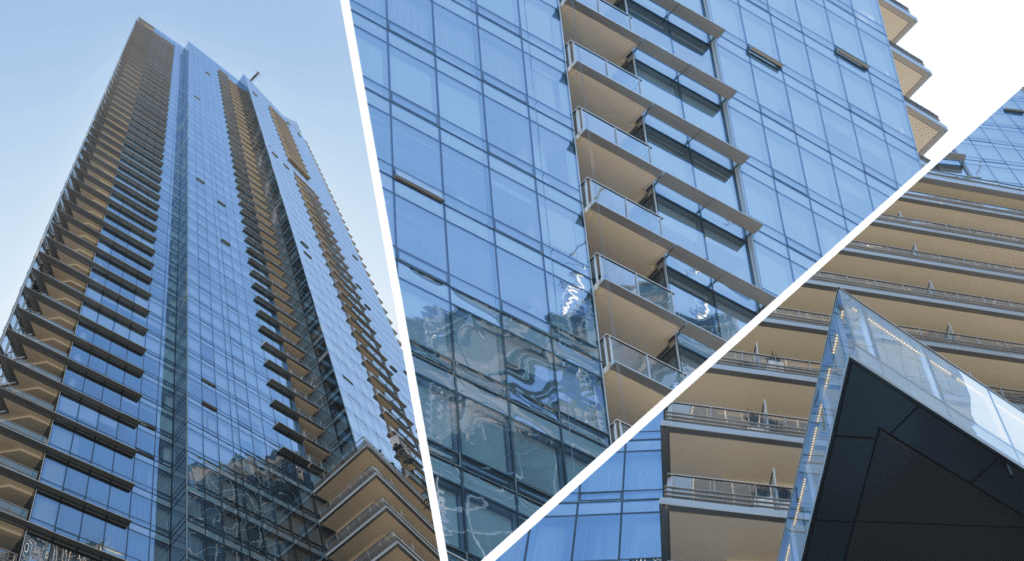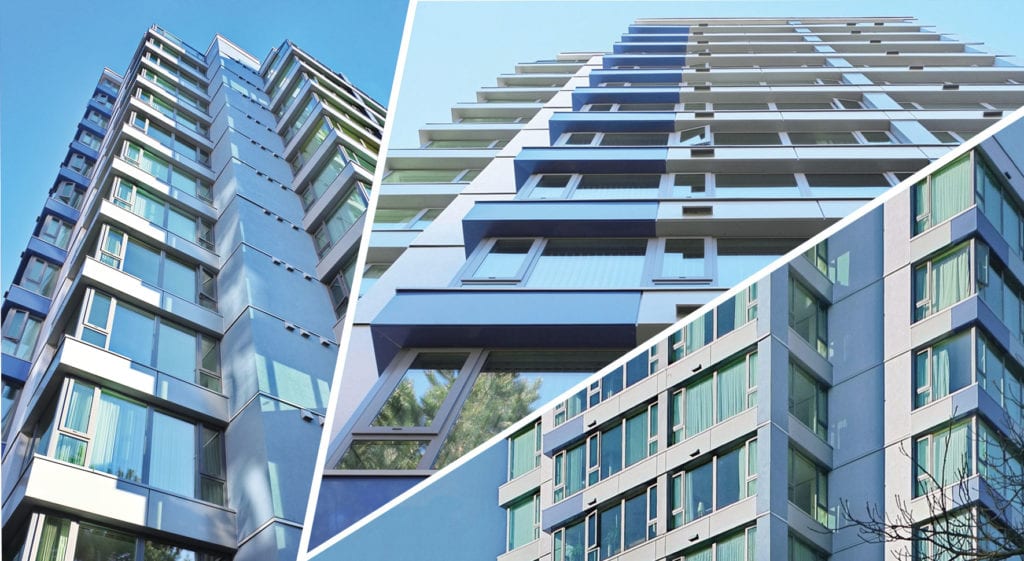Energy-efficient design in buildings is helping reduce the carbon footprint of our communities and manage future energy costs in North America. A key element in achieving energy efficiency is to measure and verify energy savings and emissions reductions, ensuring that low energy buildings continue to perform: enter RDH.
In 2013 RDH was retained to undertake a two-part study focused on the measurement and verification of energy savings in a sample of residential, community, commercial and mixed-use buildings, all of which were designed as high-performance developments and constructed within the last ten years.
This four-part blog series shares lessons learned and key findings from our work. In Part 1, we explored the measured performance of a handful of recent high-performance buildings. In Part 2, we dig deeper into how performance can vary from the intended design or energy model. And Parts 3, and 4 will discuss how building designers, owners, and managers can ensure their buildings perform at their best.
In Part 1, we explored the measured performance of a handful of recent high-performance buildings. In Part 2, we dug deeper into how performance can vary from the intended design or energy model. And in Part 3 we explored the question of why models differ from reality. Now, in the final instalment, we will discuss how building designers, owners, and managers can ensure their buildings perform at their best and meet their energy efficiency goals.
Now that we’ve looked at how and why energy models can differ from measured energy use in a building, it’s clear that while many buildings will have variables at play that cannot be predicted, energy models are still a very important tool in designing high-performance buildings. So, how can we ensure buildings perform as designed?
For Designers and Architects
As a designer or architect, you want to ensure that your designs result in buildings that perform as intended. One of the ways you can do this is by focusing on the building enclosure and using passive design measures that are reliable ways to maximize building performance. Examples of passive design resulting in high-performance buildings include The Belmont and the North Park Passive House—both projects on which RDH performed measurement and verification of the occupied buildings, in operation, to make sure they achieved deep energy savings over time.
Another way you can help ensure your designs yield high-performance buildings is by consulting with your energy modelling team or consultants early in the design process to ensure that the models use realistic inputs and take into consideration as much building usage information as possible. These models would also use effective R-values to capture the real building enclosure performance.
For Governments, Municipalities, and Utilities
As the organizations offering incentives to architects, developers and owners constructing high-performance buildings, it is imperative to ensure these incentive programs are working and the best way to do this is through program studies like the one discussed in Parts 1, 2, and 3 of this blog series. With proper investigative studies you will be able to assess the effectiveness of the incentive programs and determine whether program efforts are truly improving building performance and delivering measured savings. Future program designs could also consider a measured component, or a bonus offer attached to one or more years of M&V to ensure savings are achieved.
For Owners
As important as design is in ensuring your building performs as expected, there are still steps to be taken after construction has been completed.
After the first year of building occupancy and use, it is suggested that you complete a measurement and verification (M&V) study to ensure that your occupied building is performing as intended in terms of energy efficiency.
Beyond M&V studies, an important part of ensuring optimal performance is the testing and commissioning of buildings. Recommended reviews include:
- Field reviews
Have qualified, knowledgeable personnel visit the site throughout construction to ensure that construction is conforming to drawings and specifications.
- Airtightness testing
Measuring, identifying, and correcting air leakage is the best way to ensure an airtight building.
- Enclosure commissioning
While LEED v4 has renewed interest in enclosure commissioning, RDH has been doing this work on all of our new construction projects for years. Enclosure commissioning involves everything from design reviews to field reviews to testing. Further guidance is provided in a National Institute of Building Science guideline.
- Mechanical and electrical systems commissioning
As with the enclosure, have a qualified professional review the mechanical and electrical system design and installation, and perform testing to ensure systems are working as intended.
RDH offers consulting and investigative services in many of these areas, and we understand the importance of looking at the whole building to assess performance.
While testing and commissioning of a building may seem like added expenses, the results they provide are critical to ensuring high-performance buildings. These services can lead to improvements or modifications that save energy and money in the long run, and help maximize the life of building assets and systems.
Final Thoughts on Ensuring Energy Efficiency
At RDH, we’ve always preached real, measurable performance. We believe that when energy conservation measures are correctly designed, modelled, and implemented, big savings can be realized. But we need to measure, benchmark, and verify energy performance in order to realize these savings consistently and over the long term.
As the saying goes, you can’t manage what you don’t measure; energy is no exception.


